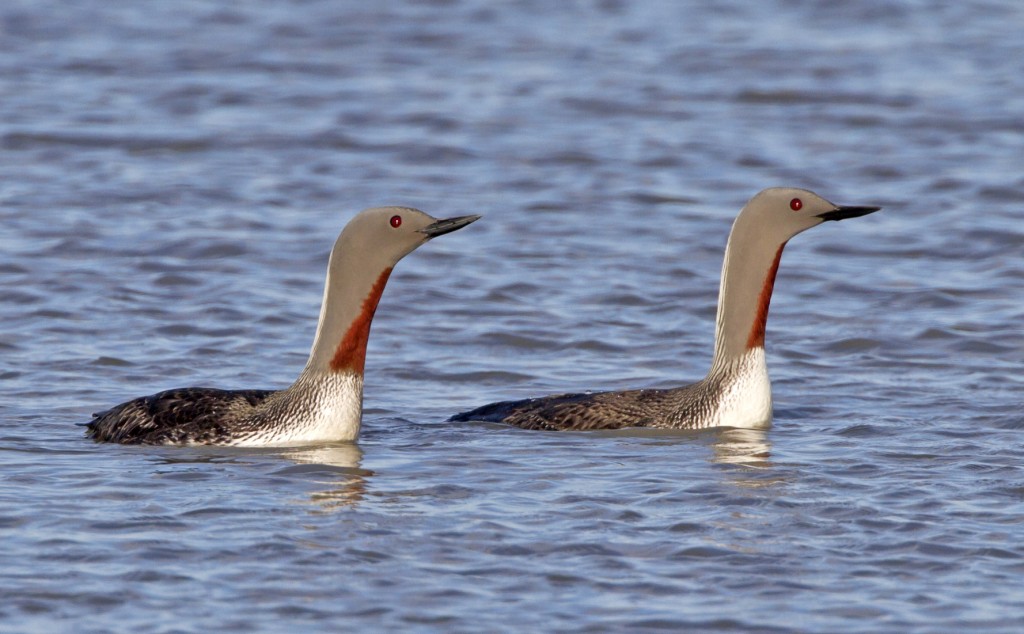Osprey Diary 23rd April
Our female osprey never ceases to amaze and surprise us- this morning she was off the nest and out of sight for over five hours which is highly unusual for her. Luckily the male stuck to his incubation duties like glue and held the fort until her return- what a wee star!
By far the most commonly asked question about our ospreys:
Q: How do I tell the male and female apart on the nest?
A: The female is larger, has paler brown feathers with many ragged edges, and has a much darker chest ‘necklace’ of brown spots. By contrast the male is smaller, sleeker and a darker chocolate brown, and has an almost white chest. He also has very long wingtips which meet past the end of his tail- the females are the same length as her tail. There are also subtle differences in head markings and of course different eye patterns, but the above are the easiest methods to use on the webcam.
Otherwise its been a calm quiet and misty day on the reserve with just one hour of intense excitement- when two Red throated divers were seen on the loch! These beautiful birds ( known in north America as Loons) nest in the far north highlands of Scotland and artic regions in summer, after wintering at sea. These birds were probably a pair ( they mate for life) heading north to their favourite summer nesting area and just dropped in for a visit.

What lovely visitors though- we will be keeping a sharp eye out for them over the next couple of days in case they hang around- as they sometimes do awaiting better weather to continue their journey north.
Elsewhere today , the ranger and volunteers have been doing some spring botanical monitoring at Keltneyburn reserve, some photographic monitoring of tree regrowth at Balnaguard Glen , and installing mink rafts on our riverside to survey of invasive north American mink- a busy week all round.
Q: Is the nest illuminated at night? I assumed it was infra red, but having looked and seen the shadows I’m now not so sure. Is it just to deter humans or does it have other purposes and if so what are they, and is it a common practice?
A: The nest is not illuminated ( there is no visible light) at night. The camera has a small inbuilt infrared lamp that enables it to ‘see’ and record . The birds, like us have extremely poor infrared receptors in their eyes and cannot see the light, and neither can we if we look at the nest directly. You need infrared sensitive night scopes or binoculars or cameras to see the light, so the birds are not disturbed at all. The purpose is to allow us to see the birds at night in order to monitor their behaviour and spot if there are any problems such as human disturbance- this is the same technology uses in most security cameras.
Help protect Scotland’s wildlife
Our work to save Scotland’s wildlife is made possible thanks to the generosity of our members and supporters.
Join today from just £3 a month to help protect the species you love.
Preface
Our female osprey never ceases to amaze and surprise us- this morning she was off the nest and out of sight for over five hours which is highly unusual for …
